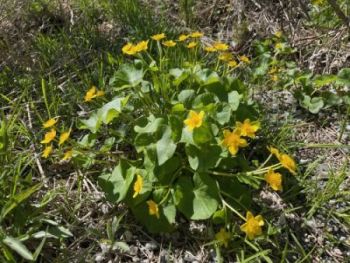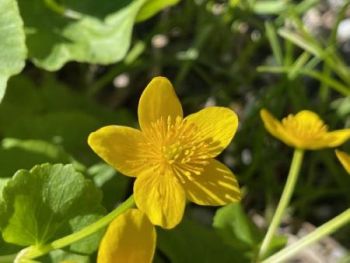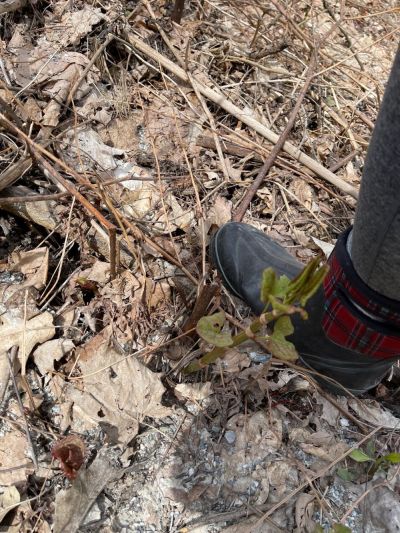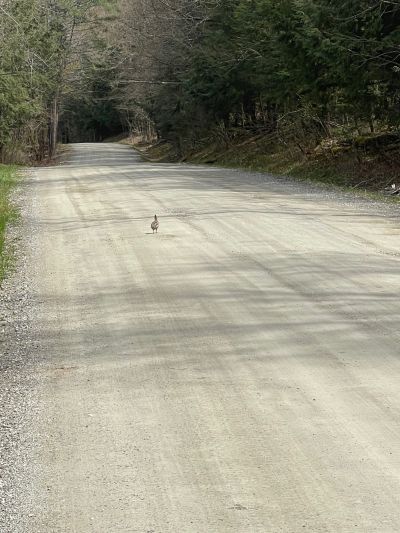Community Blog for Observers in Vermont
Observers make science happen.
Check out the main Campaign blog here, and look below for photos and stories about your great work happening in Vermont.
Share your images or stories about observing by contacting us, with "blog" in the subject line.
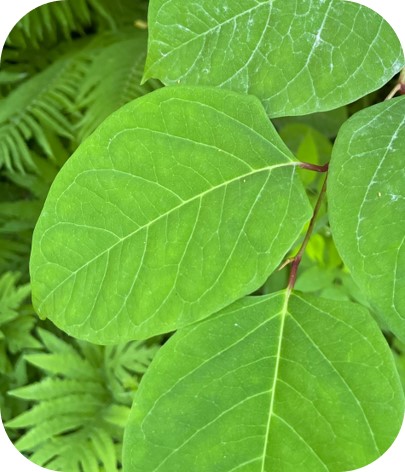
Table of Contents:
- March 8, 2022
- March 14, 2022
- March 15, 2022
- March 21, 2022
- March 24, 2022
- April 1, 2022
- April 12, 2022
- April 19th, 2022
- April 28th, 2022
- May 6th, 2022
- May 13th, 2022
- May 19th, 2022
- May 27th, 2022
- May 30th, 2022
- June 10th, 2022
- June 25th, 2022
- July 1st, 2022
- July 6th, 2022
July Tea Tuesday - Change of Date!
July 6th
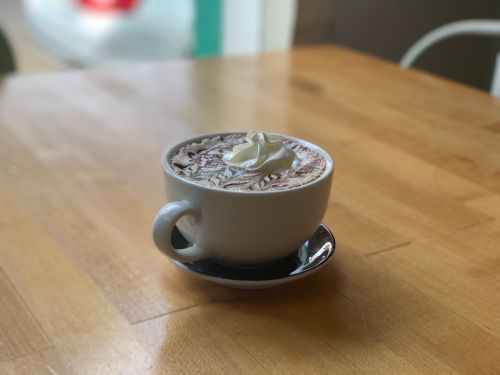
Mark your calendars! This month’s Tea Tuesday has moved from the 12th to the 19th! You are invited to join Pesky Plant Trackers from across the region, as we socialize, ask questions, discuss plants, and learn from one another. UMN and FPR staff will be joining that day - will you?
- July 19, 2022 at 4pm EST (3 pm Central)
- Check out the main Campaign's event page here, to learn more and find the links to join these events.
Early Signs for Knotweed Flowering
July 1st
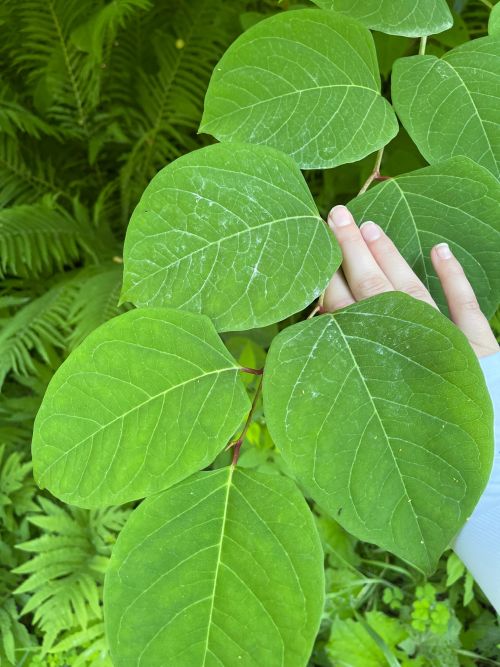
Check out the community blog to learn about early signs for knotweed flowering (example provided is for compacta variety) and two tips on how to increase the quality of the data being collected. Elizabeth hasn’t observed flowers on her knotweed,...yet!
What is That?!
June 25th
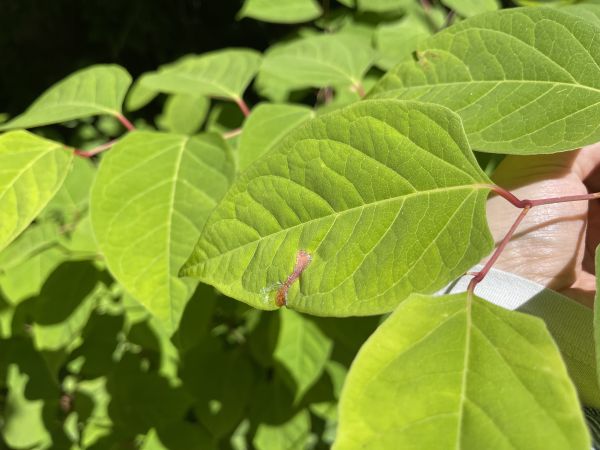
A true case of "what on earth is that?" While out observing knotweed, Elizabeth noticed bizarre pools of amber liquid on some of the leaves. A few minutes of scouting (which weren't recorded in the effort for the observation trip!!) turned up the cause -- tree resin! This portion of the patch was growing beneath several tall pine trees, that were dripping resin. This turns out to be a perfectly normal behavior for the pines, and made for an extra interesting phenology observation trip for Elizabeth. What cool, interesting, or bizarre feats of nature have you witnessed during your phenology observing?
Tea Tuesday Reminder
June 10th

Check out community blog about how to observe flower phenophase for wild parsnip! They break down using a great illustration, how to differentiate between a compound umbel and one of the many smaller clusters which make up the umbel. And tune in on June 14that 4pm EST for Tea Tuesday!
- Check out the main Campaign's event page here, to learn more and find the links to join these events.
Are There Flowers Yet?!
May 30th
Wondering when to start recording “Yes” for “Flowers or Flower bud” phenophase? Early signs of flowers can be tricky to pick up on, especially with features that potentially look similar. Check out the tip of this knotweed cane. There are two skinny features that look like they might produce flower buds, but they are in fact unfurled leaves! No flowers yet on this knotweed.
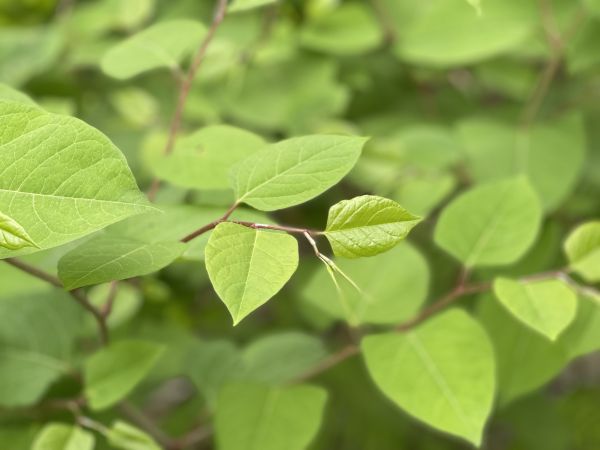
Check out these resources (about halfway down each webpage) from Pesky Plant Trackers for a refresher on knotweed and wild parsnip phenophase identification!
Getting Taller
May 27th
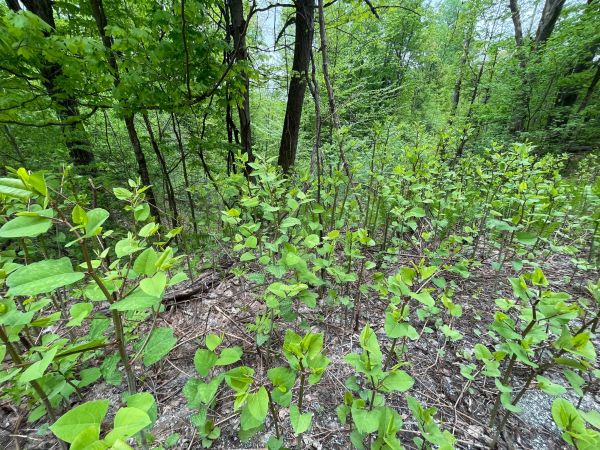
The knotweed at Elizabeth’s patch is now almost “shoulder high”, but no signs yet of the next phenophase, “Flowers or Flower Buds”.
Keep a Watchful Eye still for "Initial Growth"
May 19th
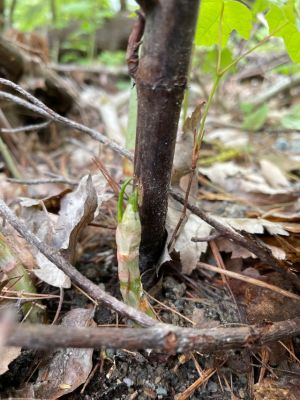
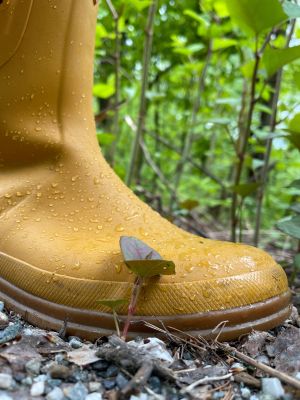
When plants start growing, and phenophases feel like they’re progressing quickly, make sure to always check for all potential phenophases. These photos show initial growth (and also how small some plants can still be at this point) amongst a patch that has grown “waist high”. You would record “Yes” for all observed phenophases.
Experiencing the Phenology of Other Species
May 13th
On the way to your sites (especially if you've been observing the site since snow was still on the ground), there has likely been a delightful surge of color. Starting to bloom right now in central Vermont is the lovely marsh-marigold!
Phenology Site Buddies
May 6th
Elizabeth's knotweed is now "boot high" and displaying unfolded leaves. Her ruffed grouse friend made an appearance on the walk to the site.
What to Do (and Not Do) When New to a Site
April 28th
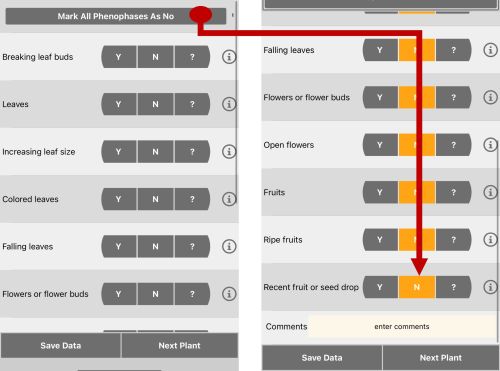
Hello! Elizabeth, the Pesky Plant Trackers in Vermont coordinator, here. I have a fabulous opportunity for you to learn from me making mistakes! I was reading a Pesky Plant Tracker blog post about winter ID, and in checking my own data, realized that my own observations included “recent fruit or seed drop” even though I didn’t intend for that to be checked. If we look at the NPN definition for “recent fruit or seed drop”, it requires a comparison from a last visit, which is impossible if it’s your first visit! On closer investigation, I realized it was marked because I was using the “Mark All Phenophases As No” option at the top of the data sheet on the Nature's Notebook App, and hadn’t noticed it auto-selected “recent fruit or seed drop”. While this might be fine for later visits, I needed to go back and adjust my initial observations. This is a good thing to check for any data you’ve collected when starting to observe a new plant, independent of time of year.
What to Do if it Snows After Initial Growth Recorded
April 19th, 2022
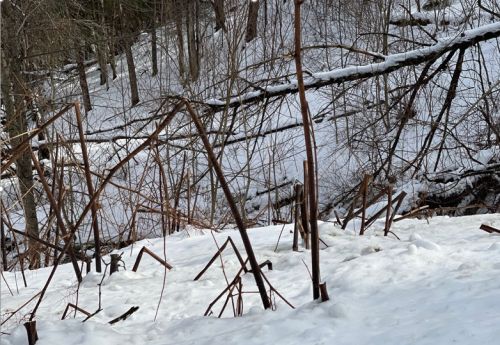
You’ve found a site for wild parsnip or knotweed, you’ve even recorded lots of “No” data, and started to record “Yes” data for initial growth,...but then it snows! How do we record what we know is there, if we cannot see it?
Check out this blog post from Pesky Plant Trackers, where they discuss what to do – spoiler: it’s your opportunity to utilize the “?” option, and leave a comment like “snow covers ground”.
Tea Tuesday - Today!
April 12, 2022.

You are invited to join Pesky Plant Trackers from across the region, as we socialize, ask questions, discuss plants, and learn from one another. UMN and FPR staff will be joining today - will you?
-
April 12, 2022 at 4pm EST (3 pm Central)
-
Check out the main Campaign's event page here, to learn more and find the links to join these events.
No Jokes Here, But Still Some Fun
April 1, 2022
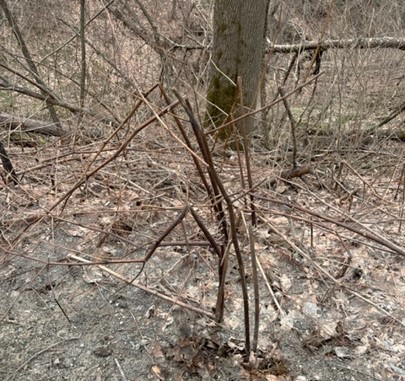
Elizabeth reports that while observing her knotweed patch, she heard a ruffed grouse drumming. When she looked up from the knotweed plants, no more than 50 ft away was a ruffed grouse proudly standing on a fallen log, drumming - a sure sign of spring. What signs of spring (other than invasive plants growing) are you seeing?
Check out this great resource from Cornell University if you're curious to learn more about ruffed grouse, or to hear the drumming for yourself!
Initial Growth!
March 24, 2022
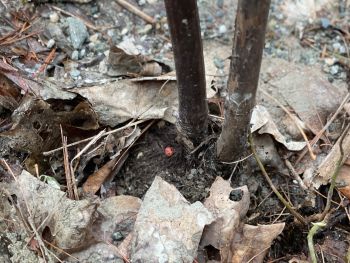
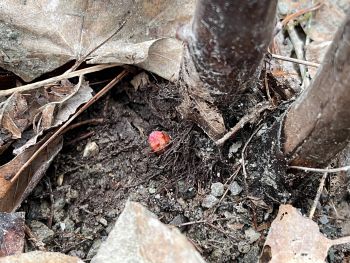
The reddish-pink bump in the center of the images is a new shoot of knotweed breaking through the surface of the soil. If you are also seeing this at your knotweed site, record "Y" for initial growth!
Checking for Early Phenophases
March 21, 2022
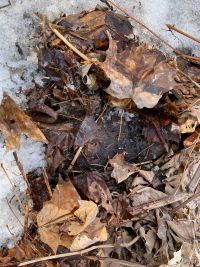
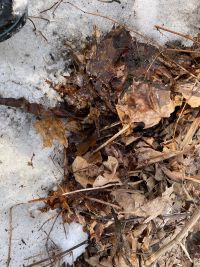
Elizabeth checks for initial growth at her knotweed site. She pushes back the leaf litter to check, and then returns it. Check out Pesky Plant Tracker's Community Blog's post from March 30th, 2021, that discusses how to observe early phenophases while reducing disturbance.
Save the Dates for Tea Tuesdays!
March 15, 2022
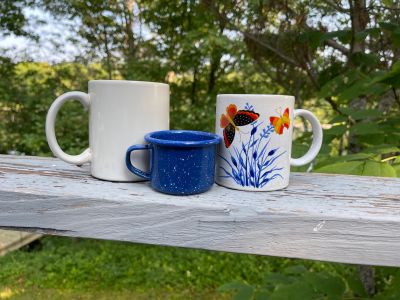
The main Campaign hosts Tea Tuesdays once a month. These are Zoom* events for everyone, whether you are new to Pesky Plant Trackers or an experienced volunteer. From April through October, "Teas" are your chance to socialize with other volunteers, ask questions, discuss plants, and learn from one another.
-
April 12, 2022 at 4pm EST (3 pm Central)
-
May 17, 2022 at 4pm EST (3 pm Central)
-
June 14, 2022 at 4pm EST (3 pm Central)
-
July 12, 2022 at 4pm EST (3 pm Central)
-
August 16, 2022 at 4pm EST (3 pm Central)
Check out the main Campaign's event page here, to learn more and find the links to join these events.
* Zoom is a web-based video conferencing app. You will need to download the Zoom app if it is not already on your device.
Checking out potential plants
March 14, 2022
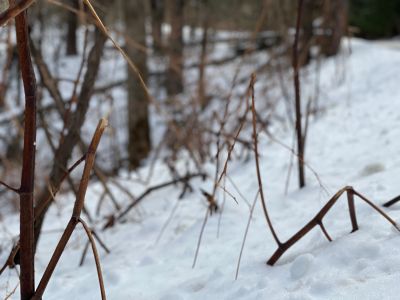
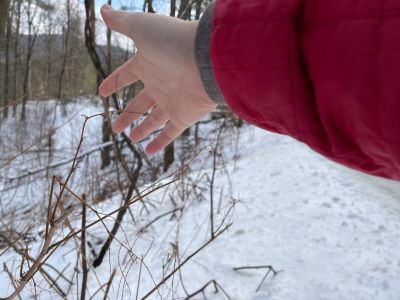
Elizabeth checks out a potential observation site for knotweed. If you are unsure about the identity of your potential plants, contact us.
Great tips on site selection from the main Campaign:
- Locating a plant: Some observers already know of wild parsnip or knotweed in their local environment when they sign up for Pesky Plant Trackers. For others, it takes more time and effort to locate a plant to observe. Where ever you are in your process, it is never too late to begin observing.
Welcoming spring and new volunteers
March 8, 2022
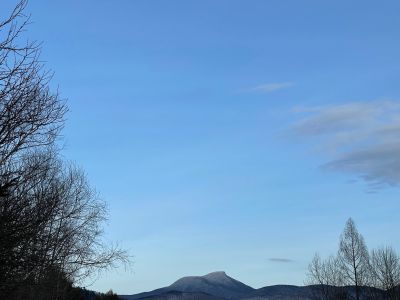
Soon enough Vermont's winter vistas will be warmed by the bursting of new leaves and by the excitement for spring. We're so thrilled to have you join us on this journey to support the good work of the Pesky Plant Trackers Campaign, as it grows eastward, adding to a broadening body of scientific knowledge. And as we always like to say on VTinvasives, thank you for being willing to -- learn. get involved. make a difference.

